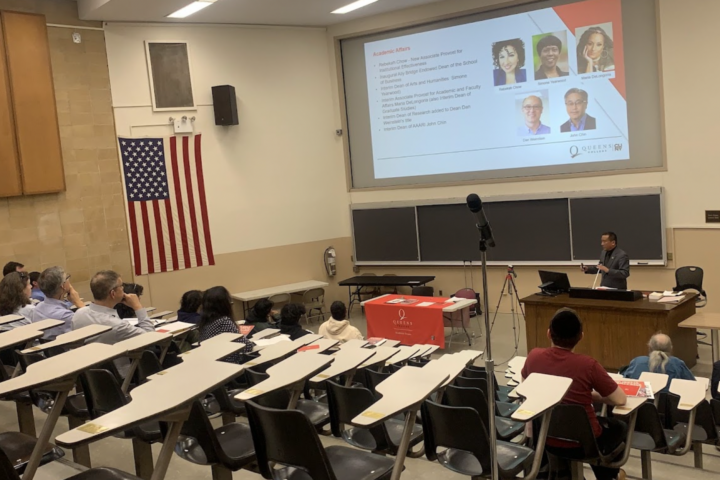The Center for Ethnic, Racial and Religious Understanding hosted an event titled Women and the Sciences March 11.
A panel of women including CUNY students and professors discussed the challenges women face in STEM, an acronym for science, technology, engineering and mathematics, career fields.
“The biggest challenge, in my opinion, is not only the competitive nature of the field, but the societal pressures women face,” Shoshana Wodinsky, Queens College neuroscience major, said.
Wodinsky said she came from a very religious family that stressed a traditional life for her and noted the same ideals can be found in society.
“You’ll more likely see an actress on television playing a mother than playing a scientist. When’s the last time you’ve seen women being portrayed doing something STEM related during a commercial? Think about it. On the other side, I can think of at least five commercials where women are at a party or portrayed as a homemaker,” Wodinsky said.
According to a report by the Department of Commerce, women hold less than 25 percent of STEM jobs although they fill close to half of all jobs in the U.S. economy.
“As a woman [studying] physics, I always felt like I was looked down upon, both by fellow students and by faculty,” Sara Camnasio, Hunter College physics and astronomy major, said.
Camnasio said she was disregarded in her studies because of her gender.
“I’ve always felt like I was treated like I was not competent enough to be [in the] major. Even though I made it through, many people still have very sexist attitudes towards me and make offensive comments here and there.”
Women majoring in STEM are less likely than their male counterparts to work in a STEM occupation; however, they are more likely to work in education or health care.
“It’s hard, but it’s worth it,” Nathalia Holtzman, associate professor of biology at QC, said. “You have to be committed and really want it for yourself. There are always going to be phases of enthusiasm and difficulties. Finding a support group or a mentor in STEM is really important.”
The possible factors contributing to the discrepancy of women and men in STEM jobs include a lack of female role models, gender stereotyping and less family-friendly flexibility in the STEM fields.
“As for what we can do, persuading women to enter the STEM workforce is a great tactic, but it may be just as pertinent to get women to enter media jobs, such as advertising or television writing,” Wodinsky said. “The sooner that we have women portrayed as intelligent and formidable scientists on television, the sooner young girls will realize that it is a viable career choice.”
The relatively few women who receive STEM degrees are concentrated in physical and life sciences, in contrast to men, who are concentrated primarily in engineering.
“I think in order for the situation to improve, there needs to be an effort into involving men into spreading awareness,” Camnasio said.
“There have been a lot of workshops and talks about the problem of the lack of women in STEM, but they were always targeted or mostly attended by women. Closing the gender gap needs to be a collaborative effort between both men and women. Especially because mostly men are still at the top, are still the ones running committees, running departments, so they need to be informed to break the cycle of poisonous sexist beliefs,” Camnasio said.













